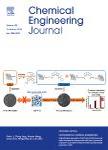版权所有:内蒙古大学图书馆 技术提供:维普资讯• 智图
内蒙古自治区呼和浩特市赛罕区大学西街235号 邮编: 010021

作者机构:School of Chemical and Environmental Engineering Shanghai Institute of Technology Shanghai201418 China Shanghai Modern Chemical Industry Vocational College Shanghai2011512 China State Key Laboratory of Chemical Engineering Membrane Science and Engineering R&D Lab Chemical Engineering Research Center School of Chemical Engineering East China University of Science and Technology Shanghai200237 China
出 版 物:《Chemical Engineering Journal》 (Chem. Eng. J.)
年 卷 期:2025年第505卷
核心收录:
学科分类:0830[工学-环境科学与工程(可授工学、理学、农学学位)] 0817[工学-化学工程与技术] 08[工学] 0815[工学-水利工程] 0805[工学-材料科学与工程(可授工学、理学学位)] 0703[理学-化学]
主 题:Antimicrobial properties Low-energy Smart adsorption membrane Super hydrophilic Temperature response
摘 要:While the contradiction between permeability and selectivity is an inherent drawback of membrane-based molecular separations, most conventional adsorbents with high adsorption capacity suffer from the same balance between adsorption and desorption. In this study, super hydrophilic hollow mesoporous carbon nanospheres (Hs) based on chitosan chain wrapping were synthesized using hydrothermal reaction. A new generation of temperature-responsive smart adsorbents (Hs-TRP) was prepared by free radical polymerization of chitosan and the temperature-sensitive molecule N-isopropylacrylamide (TRP) in aqueous solution. The adsorbent will freely switch the on/off state of the molecular gate with the rise and fall of temperature to realize the intelligent regulation of selective adsorption and rapid desorption. More importantly, the temperature difference required to switch states is very small, which significantly reduces energy consumption. Finally, a super hydrophilic smart adsorption membrane was prepared by grafting 2-acrylamido-2-methylpropanesulfonic acid (AMPS) monomer via free radical graft copolymerization reaction to confine Hs-TRP on the surface of PVDF membrane. Modified membranes exhibit both efficient separation of oil and water and dyes as well as antimicrobial properties, with a water flux two orders of magnitude higher than that of typical pressure-driven membranes with similar removal rates. Moreover, the membrane can be effectively cleaned by the adsorption/desorption process, and the flux recovery rate can reach 96% for each cycle, and the retention recovery rate of methylene blue can still reach 98% after several cycles. The membranes we present here provide a simple and effective platform for low-energy wastewater remediation. © 2025 Elsevier B.V.